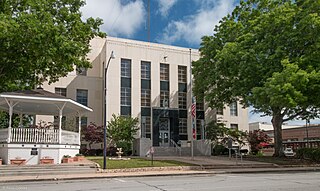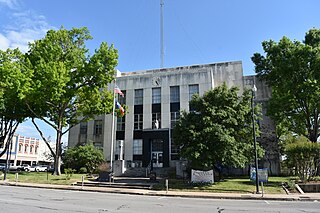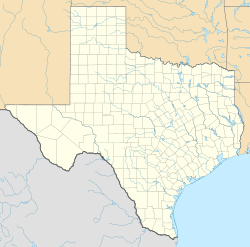
Juneteenth, officially Juneteenth National Independence Day, is a federal holiday in the United States. It is celebrated annually on June 19 to commemorate the ending of slavery in the United States. The holiday's name is a portmanteau of the words "June" and "nineteenth", as it was on June 19, 1865, when Major General Gordon Granger ordered the final enforcement of the Emancipation Proclamation in Texas at the end of the American Civil War. In the Civil War period, slavery came to an end in various areas of the United States at different times. Many enslaved Southerners escaped, demanded wages, stopped work, or took up arms against the Confederacy of slave states. In January 1865, Congress finally proposed the Thirteenth Amendment to the United States Constitution for national abolition of slavery. By June 1865, almost all enslaved were freed by the victorious Union Army, or abolition laws in some of the remaining U.S. states. When the national abolition amendment was ratified in December, the remaining enslaved in Delaware and in Kentucky were freed.

Washington County is a county in Texas. As of the 2020 census, its population was 35,805. Its county seat is Brenham, which is located along U.S. Highway 290, 72 miles northwest of Houston. The county was created in 1835 as a municipality of Mexico and organized as a county in 1837. It is named for George Washington, the first president of the United States.

Brenham is a city in east-central Texas, United States, and the county seat of Washington County, with a population of 17,369 according to the 2020 U.S. census.

The 1900 Galveston hurricane, also known as the Great Galveston hurricane and the Galveston Flood, and known regionally as the Great Storm of 1900 or the 1900 Storm, is the deadliest natural disaster in United States history. The strongest storm of the 1900 Atlantic hurricane season, it left between 6,000 and 12,000 fatalities in the United States; the number most cited in official reports is 8,000. Most of these deaths occurred in and near Galveston, Texas, after the storm surge inundated the coastline and the island city with 8 to 12 ft of water. As of 2024, it remains the fourth deadliest Atlantic hurricane on record, behind Hurricane Fifi of 1974. In addition to the number killed, the storm destroyed about 7,000 buildings of all uses in Galveston, which included 3,636 demolished homes; every dwelling in the city suffered some degree of damage. The hurricane left approximately 10,000 people in the city homeless, out of a total population of fewer than 38,000. The disaster ended the Golden Era of Galveston, as the hurricane alarmed potential investors, who turned to Houston instead. In response to the storm, three engineers designed and oversaw plans to raise the Gulf of Mexico shoreline of Galveston Island by 17 ft (5.2 m) and erect a 10 mi (16 km) seawall.

Washington-on-the-Brazos is an unincorporated community along the Brazos River in Washington County, Texas, United States. The town is best known for being the site of the Convention of 1836 and the signing of the Texas Declaration of Independence.

U.S. Route 290 is an east–west U.S. Highway located entirely within the state of Texas. Its western terminus is at Interstate 10 southeast of Segovia, and its eastern terminus is at Interstate 610 in northwest Houston. It is the main highway between Houston and Austin and is a cutoff for travelers wanting to bypass San Antonio on Interstate 10. Throughout its length west of Austin, US 290 cuts across mountainous hills comprising the Texas Hill Country and the Edwards Plateau; between Austin and Houston, the highway then travels through gradually hilly grasslands and pine forests comprising the Gulf Coastal Plains.

Blinn College is a public junior college in Brenham, Texas, with additional campuses in Bryan, Schulenburg, Sealy and Waller. Brenham is Blinn's original and main campus, with housing and athletics.
Harrisburg is a community now located within the city of Houston, Texas.
Independence is an unincorporated community in Washington County, Texas, United States. According to the Handbook of Texas, the community had a population of 140 in 2000. It is located about an hour northwest of the Greater Houston metropolitan area.
Timeline of historical events of Houston, Texas, United States:

Chappell Hill is an unincorporated community in the eastern portion of Washington County, Texas, United States. It is located inside Stephen F. Austin's original colony, and the land is some of the oldest Anglo-settled in the state. According to the Handbook of Texas, the community had a population of 600 in 2000. It is located within the Greater Houston metropolitan area.

The Simon Theatre is a theater in Brenham, Texas. It was built by James Simon, designed by Houston architect Alfred C. Finn, and constructed in 1925. For many decades the Simon Theatre provided the community with a setting for theatrical performances, vaudeville acts, ballroom dances, special events and movies.
The history of the Jews in Brenham, Texas; covers a period of over 140 years. As one of the first areas in Texas, outside of major population centers, to develop a sizable Jewish population, the community boasts many things of historical note. The Brenham community was formally organized in 1885.

Alfred Charles Finn was an American architect. He started in the profession with no formal training in 1904 as an apprentice for Sanguinet & Staats. He worked in their offices in Dallas, Fort Worth, and Houston. His credits during his tenure residential structures, but firm was a leader in steel-frame construction of skyscrapers.
The Houston and Texas Central Railway (H&TC) was an 872-mile (1403-km) railway system chartered in Texas in 1848, with construction beginning in 1856. The line eventually stretched from Houston northward to Dallas and Denison, Texas, with branches to Austin and Waco.

Pershing House has been the residence of the commanding officers of Fort Sam Houston since 1881. Located in Bexar County, San Antonio, Texas, the military post is currently part of Joint Base San Antonio. The house was added to the National Register of Historic Places listings on 30 July 1974. After the Texas annexation to the Union in 1845, the United States Army became a steady presence in what was then designated the Department of Texas, providing a line of defense during both the 1846–1848 Mexican–American War, and the Texas–Indian wars that ended with the 1875 surrender of Comanche chief Quanah Parker at Fort Sill, Oklahoma. The combining of Fort Sam Houston, Randolph Air Force Base, Lackland Air Force Base and Martindale Army Airfield, to create Joint Base San Antonio, took place in 2009.
Phillipsburg is an unincorporated community in southern Washington County, in the U.S. state of Texas. The very small rural community is located along State Highway 36 (SH 36) south of Brenham. Aside from the names of two local roads, the name Phillipsburg is no longer marked on modern maps. The cemetery and Lutheran church, which is still open for worship, are actually slightly to the south in neighboring Austin County.

The Seward Plantation is a historic site built in 1855, a Southern plantation-turned-ranch located in Independence, Texas. The Seward Plantation has been listed on the National Register of Historic Places since January 29, 2013. It was documented as part of the Historical American Buildings Survey. It has a Texas Centennial Marker.
William Penn is an unincorporated community in Washington County, Texas, United States. According to the Handbook of Texas, the community had a population of 100 in 2000. It is located within the Greater Houston metropolitan area.














